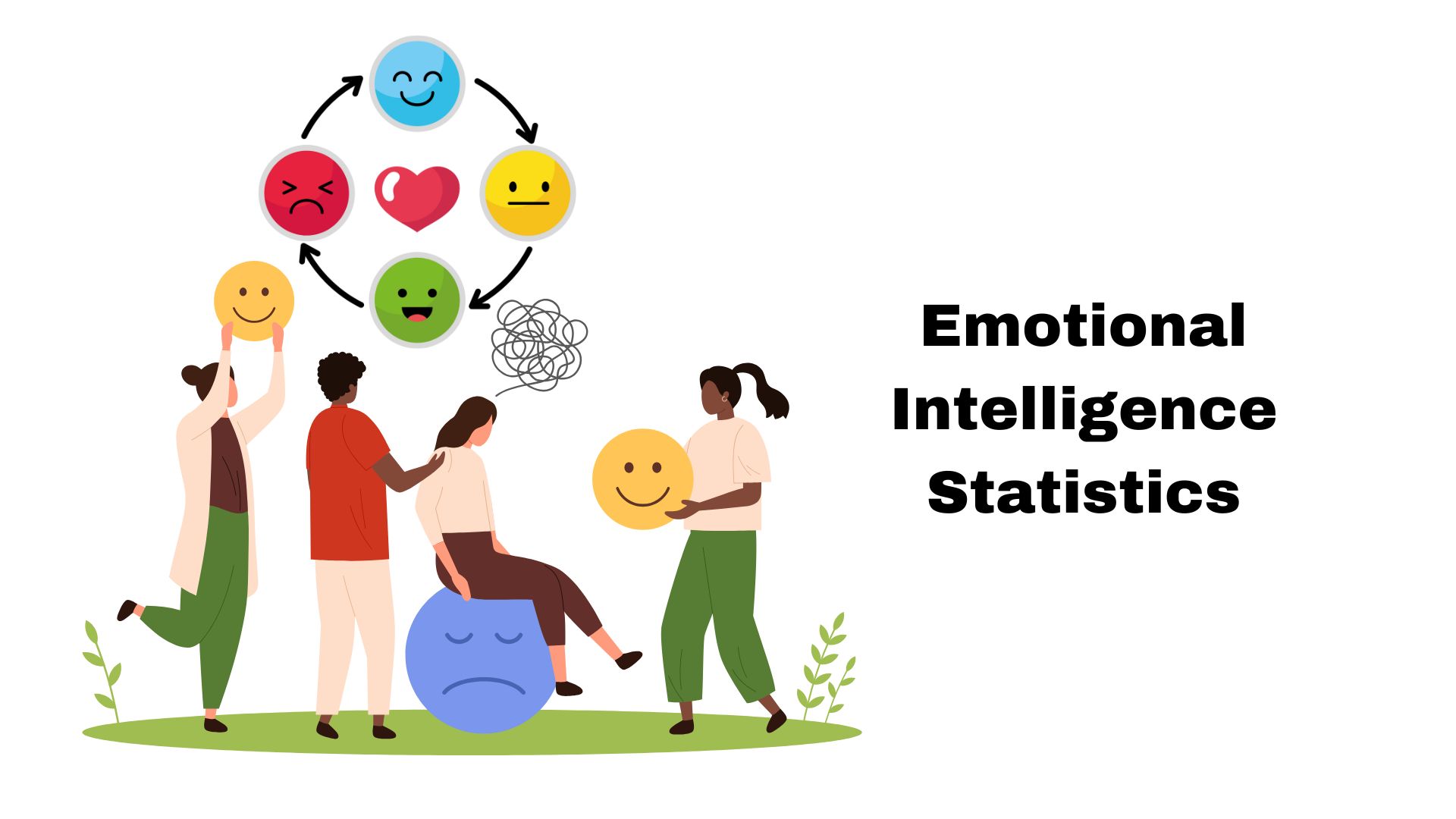Gun Violence Statistics By Demographics, Insights, Yearly Trend And Facts (2025)
Updated · Jul 18, 2025
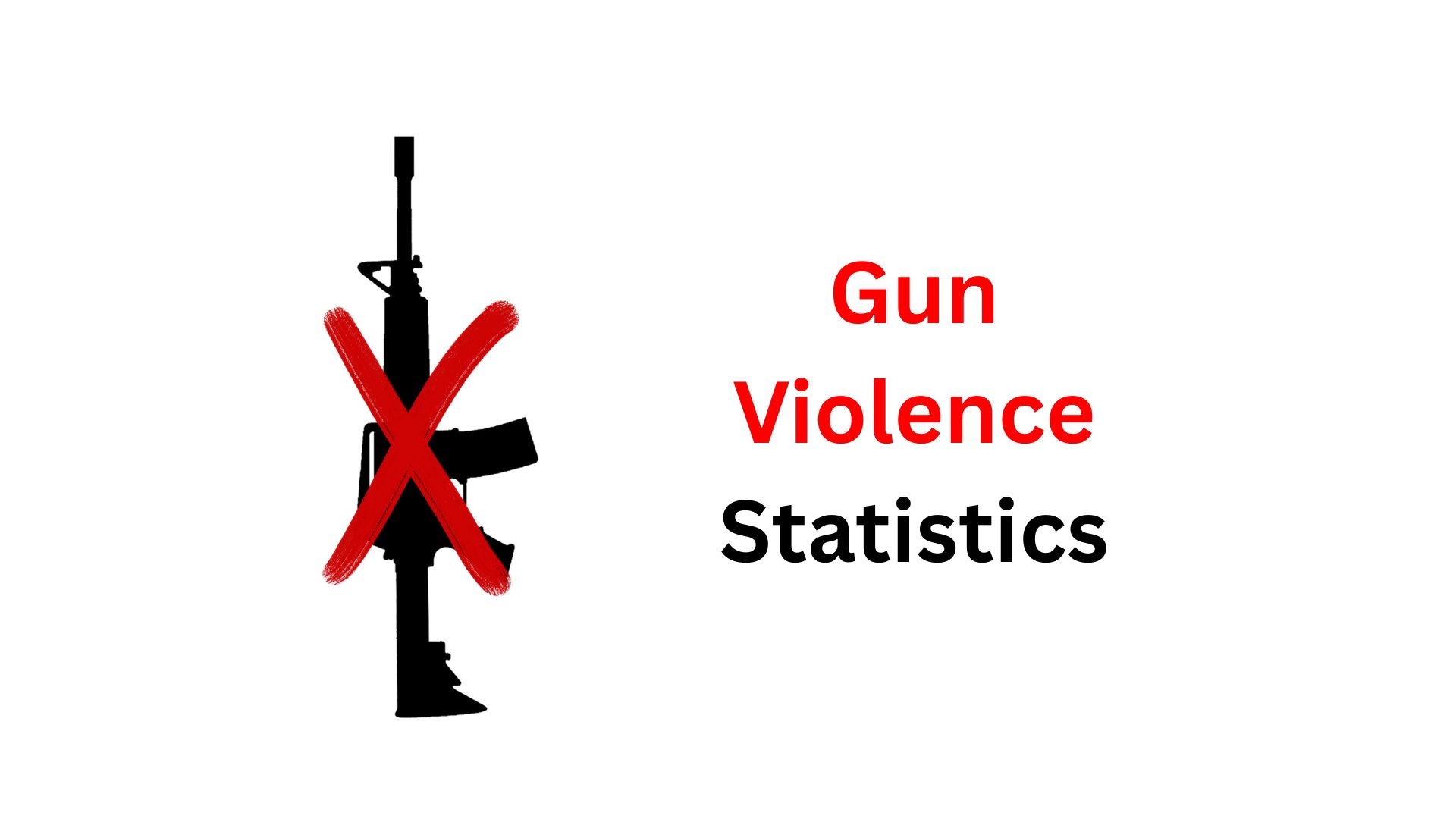
Table of Contents
- Introduction
- Editor’s Choice
- Total Gun Deaths in the U.S.
- Types of Gun Deaths – Suicide, Homicide, and Others
- Yearly Trends in Gun Violence Statistics
- State-by-State Breakdown and Regional Disparities
- Youth and Children – The Impact of Gun Violence on Young People
- Frequency, Fatalities, and Misconceptions
- Gun Ownership and Access – Influence on Gun Violence Statistics
- Demographics and Disparities – Who Is Most Affected by Gun Violence
- Economic and Social Costs of Gun Violence
- Prevention, Policy, and Public Health Approaches
- Conclusion
Introduction
Gun Violence Statistics: The following gun violence statistics reveal the harsh reality of firearm-related deaths and injuries across the United States. With over 46,700 gun-related fatalities recorded in 2023, these numbers highlight an ongoing crisis that extends far beyond high-profile mass shootings. From suicides and homicides to accidental shootings and legal interventions, the data gives us a clear picture of how widespread and deadly gun violence has become in the world. By analyzing the latest gun violence statistics, we can better understand which communities are most affected, how trends have shifted over the year, and where prevention efforts are most needed.
In this article, I’ll break down all the major aspects of firearm-related deaths in the U.S., supported by verified data and clear explanations. The goal is to help my readers understand not just the numbers, but the story behind them. Now let’s have a deeper look.
Editor’s Choice
- The U.S. recorded 46,728 firearm-related deaths in 2023, with an average of 128 deaths per day, making gun violence one of the country’s leading causes of death.
- Suicide accounts for 58% of all gun deaths, with over 27,300 cases in 2023, while homicides make up 38%, with more than 17,900 deaths.
- The gun death rate in 2023 was 7 per 100,000, slightly down from the 2021 peak, but still significantly higher than npre-2014 levels.
- Young Black males, around 15 to 34, face the highest risk of gun homicide, while middle-aged white males are most vulnerable to firearm suicides.
- Mass shootings occurred 656 times in 2023, killing 848 people. Although they make headlines, they account for less than 2% of total gun deaths.
- Children and teens around 0 to 19 suffered approximately 4,700 gun deaths, making firearms the leading cause of death for youth in the U.S.
- Southern and rural states, like Mississippi, Louisiana, and Alabama, reported the highest gun death rates, while states with stricter gun laws saw significantly lower rates.
- The economic cost of gun violence exceeds US$550 billion annually, impacting healthcare, law enforcement, schools, and community development.
- Gun ownership in the U.S. is the highest in the world, with over 393 million civilian firearms, driving both intentional and unintentional shootings.
- Evidence-based policies such as universal background checks, safe storage laws, red flag laws, and community violence intervention programs have proven effective in reducing firearm deaths.
| Category | Date / Estimate |
| Total Gun Deaths | 46,728 |
| Gun Death Rate | 13.7 per 100,000 |
| Firearm Suicides | 27,300, almost 58% |
| Firearm Homicides | 17,927, around 38% |
| Legal Intervention Deaths | 604 |
| Accidental Shootings | 463 |
| Youth Gun Deaths 0 to 19 | 4,700 |
| Mass Shootings | 656 events, 848 killed, 2,800 injured |
| Highest State Rate (Mississippi) | 29.4 per 100,000 |
| Lowest State Rate (Massachusetts) | 3.7 per 100,000 |
| Civilian-Owned Guns | 393 million |
| Annual Cost of Gun Violence | US$557 billion |
| Most Effective Interventions | Background checks, red flags laws, CVI, storage laws |
Total Gun Deaths in the U.S.
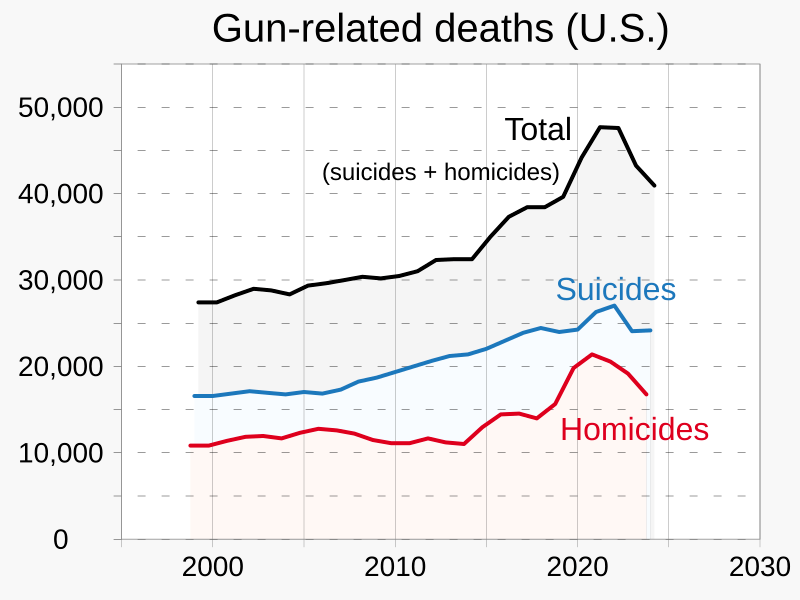
(Source: wikipedia.org)
- In 2023, the United States recorded 46,728 firearm-related deaths, making it the third-highest annual total in U.S. history. This number reflects both suicides and homicides, with the majority of these deaths being preventable.
- This figure represents a 34% decrease compared to 2022, where 48,204 gun deaths were reported. Despite this decline, the numbers remain far above historical norms seen before 2014.
- The overall gun death rate in 2023 was 13.7 per 100,000 people, a slight drop from 14.2 in 202. However, it still shows that firearm violence continues to claim thousands of lives annually.
- When compared to motor vehicle deaths, which stood at approximately 43,000 in 2023, firearm deaths exceeded car crash fatalities for the second year in a row.
- The daily impact is staggering. On average, 128 people died from gun violence each day in the U.S. in 2023, which includes more than 75 suicides and around 49 homicides.
- The highest number of gun deaths in modern history occurred in 2021, at nearly 49,000. While 2023 saw a small decline, the long-term upward trend remains concerning.
- Gun deaths now make up a larger share of overall injury-related fatalities in the U.S. than ever before, showing how firearm violence has become a major public health issue.
- The decline from 2022 to 2023 is attributed largely to fewer homicides, even though gun suicide rates continued to rise during the same period.
- Despite year-over-year fluctuation, gun deaths have remained above 45,000 annually for the past five years, showing how deeply entrenched the problem is.
- These gun violence statistics underscore the need for long-term strategies that focus on both reducing access to firearms and addressing underlying causes such as mental health and poverty.
| Year | Total Gun Deaths | Change from the Previous Year | Death Rate per 100,000 |
| 2022 | 48,204 | – | 14.2 |
| 2023 | 46,728 | -1,476 over -3.4% | 13.7 |
Types of Gun Deaths – Suicide, Homicide, and Others
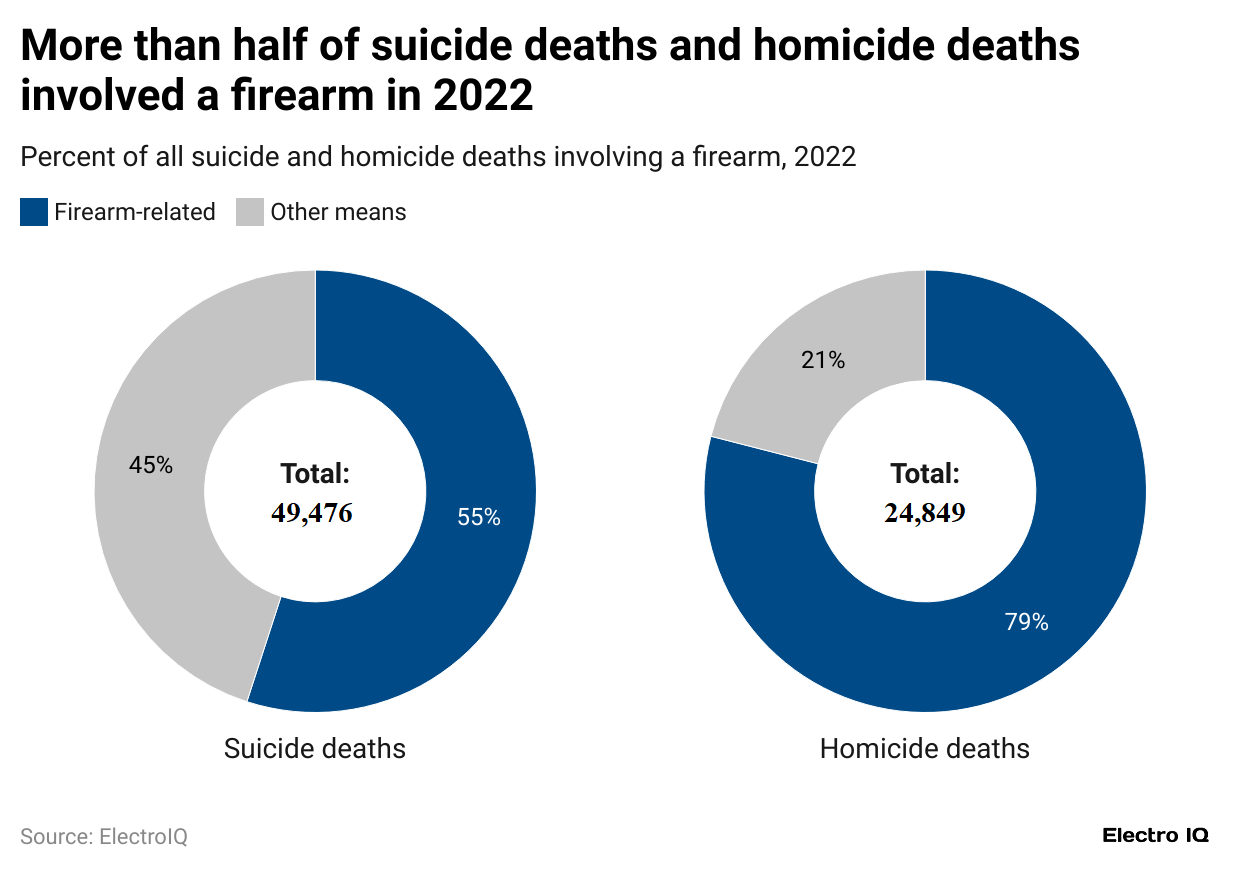
(Reference: kff.org)
- In 2023, suicides made up 58% of all firearms deaths, totaling around 27,300 deaths. This marks the highest gun suicide count ever recorded in U.S. history.
- Gun-related homicides accounted for 38% of the total, with 17,927 people killed. Though this is lower than the homicide peak of 2021, the numbers remain high compared to previous decades.
- Legal intervention deaths, typically from police shootings, accounted for 604 cases, representing just above 1% of all gun-related deaths.
- Accidental gun deaths, also called unintentional shootings, resulted in 463 fatalities in 2023. These deaths often involve children, unsecured weapons, or mishandled firearms.
- About 434 deaths were listed under undetermined intent, where officials could not classify whether it was a suicide, homicide, or accident.
- The total number of gun deaths from causes other than suicide or homicide still made up over 3% of all cases, showing that even minor categories carry significant consequences.
- The overwhelming majority, 95% of firearm deaths, fall into either suicide or homicide, indicating where most interventions should be focused.
- Suicides with firearms are almost always fatal, with a lethality rate above 85%, compared to around 5% for drug overdoses, making gun access a key risk factor.
- Gun homicides are particularly high in urban areas, often linked with gang violence, interpersonal conflict, and domestic abuse, with firearms making these disputes deadlier.
- These distinctions in gun violence statistics show how different the solutions must be. Suicide prevention, urban safety, law enforcement policy, and safe gun storage all require targeted approaches.
| Type | Number of Deaths | Share of Total |
| Suicide | 27,300 | 58% |
| Homicide | 17,927 | 38% |
| Legal Intervention | 604 | 1% |
| Accidental (Unintentional) | 463 | 1% |
| Undetermined Intent | 434 | 1% |
Yearly Trends in Gun Violence Statistics
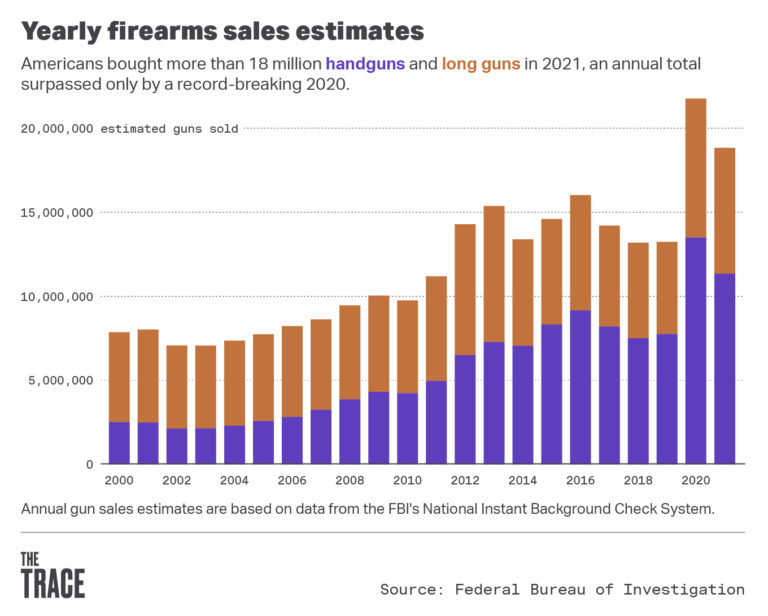
(Source: thetrace.org)
- Overall, the last decade, gun violence statistics in the U.S. show a steady and alarming rise in total firearm deaths, driven by both suicides and homicides. The total number of gun deaths has increased by over 34% since 2014, signaling a growing crisis.
- In 2014, the U.S. recorded around 33,500 firearm deaths, with suicide being the leading cause. This number continued to increase year after year, reaching a record high in 2021.
- By 2021, total gun deaths peaked at 48,830, the highest ever recorded in U.S. history. That year also marked a sharp increase in homicides, largely attributed to the effects of the COVID-19 pandemic and coal instability.
- In 2022, there was a small decline, with gun deaths falling to 48,204, and then dropping further to 46,728 in 2023, as reported by the CDC. However, the decline is modest, and the numbers remain above pre-2020 levels.
- Gun suicide rates have shown a steady rise throughout this period. The rate in 2023 reached 7.6 per 100,000, one of the highest suicide by firearm rates since the CDC began tracking such data.
- Gun homicides fluctuated more sharply, with a significant increase during 2020 and 2021, and a decline afterward. The homicide rate dropped from 6.7 in 2021 to 5.6 per 100,000 in 2023.
- These numbers reveal two contrasting trends: while gun homicides have started to decrease slightly, suicides continue to rise each year. This shows that different causes of gun deaths follow different patterns.
- In addition to the fatal cases, nonfatal shootings have remained high, though they are harder to track due to inconsistent national reporting systems. Still, emergency rooms see thousands of such cases annually.
- The surge in firearms sales during the pandemic years has also had a measurable effect. Researchers estimate that over 20 million guns were sold in 2020 alone, increasing household gun availability and risks of domestic shootings and suicides.
- These yearly trends emphasize the need to view gun violence as both a short-term crisis and a long-term public health issue, requiring sustained efforts to reverse these patterns over time.
| Year | Total Gun Deaths | Suicide Rate | Homicide Rate | Notes |
| 2014 | 33,500 | 6.3 | 3.4 | Pre-surge baseline |
| 2018 | 39,740 | 6.9 | 4.3 | First major national attention |
| 2020 | 45,222 | 7.0 | 6.1 | Pandemic year surge begins |
| 2021 | 48,830 | 7.4 | 6.7 | Highest year on record |
| 2022 | 48,204 | 7.5 | 6.2 | Slight drop in homicide |
| 2023 | 46,728 | 7.6 | 5.6 | Suicides highest ever, and homicides fall |
State-by-State Breakdown and Regional Disparities
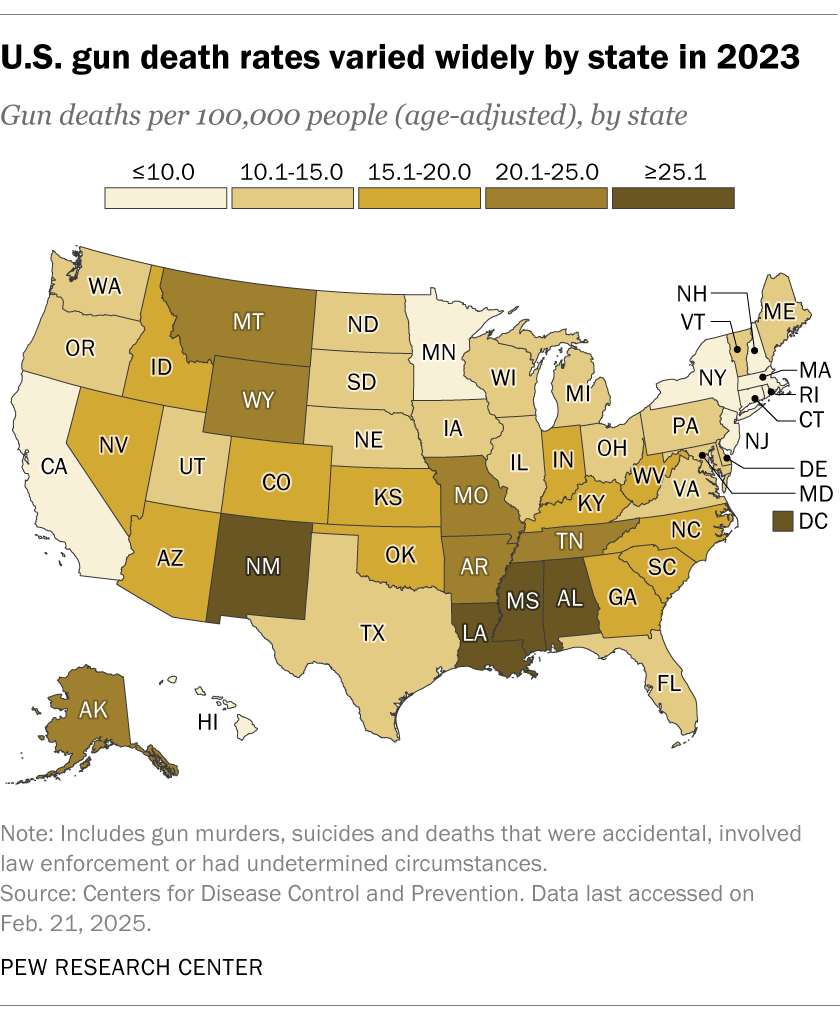
(Source: pewresearch.org)
- Gun violence statistics vary drastically across U.S. states, showing that local policies, gun laws, income levels, and healthcare access significantly influence gun death rates. In 2023, some states were rated nearly eight times higher than others.
- Mississippi, Louisiana, and Alabama reported the highest firearm death rates in the country. Mississippi led with a staggering 29.4 deaths per 100,000 people, nearly double the national average of 13.7.
- In contrast, Massachusetts, New Jersey, and Hawaii have the lowest gun death rates. Massachusetts recorder just 3.7 gun deaths per 100,000, proving how strong gun laws and public health infrastructure can make a difference.
- The Southern U.S. consistently shows the highest concentration of gun-related deaths, especially in rural counties, where suicide rates are higher and emergency response is slower.
- Western states like Alaska and Montana also report high firearm suicide rates, partly due to higher gun ownership and geographic isolation, making mental health support harder to access.
- Urban areas often struggle with firearm homicides, particularly in major cities such as St. Louis, Baltimore, and Chicago. These cities have seen some of the nation’s highest per-capita murder rates involving guns.
- In states with more relaxed gun laws, such as open carry or no background checks for private sales, firearm deaths, especially suicides and unintentional shootings, are significantly more common.
- Regions with higher gun ownership rates tend to experience more firearm deaths overall, regardless of whether they are suicides or homicides. Ownership remains one of the strongest predictors in these statistics.
- Despite the national decline in homicides in 2023, certain states like Tennessee and Missouri saw increases, showing how trends can vary dramatically at the state level even as the national average drops.
- Understanding state-by-state gun violence statistics is essential for shaping local policy responses. No signal national solution can fully address the problem without adapting to regional differences and cultural factors.
| State | Gun Death Rate (Per 100k) | Rank (Highest to Lowest) |
| Mississippi | 29.4 | 1st |
| Louisiana | 28.3 | 2nd |
| Alabama | 26.5 | 3rd |
| Alaska | 25.1 | 4th |
| Missouri | 24.6 | 5th |
| Texas | 17.3 | 15th |
| Florida | 15.0 | 24th |
| California | 8.5 | 40th |
| New Jersey | 4.6 | 48th |
| Massachusetts | 3.7 | 5oth |
Youth and Children – The Impact of Gun Violence on Young People
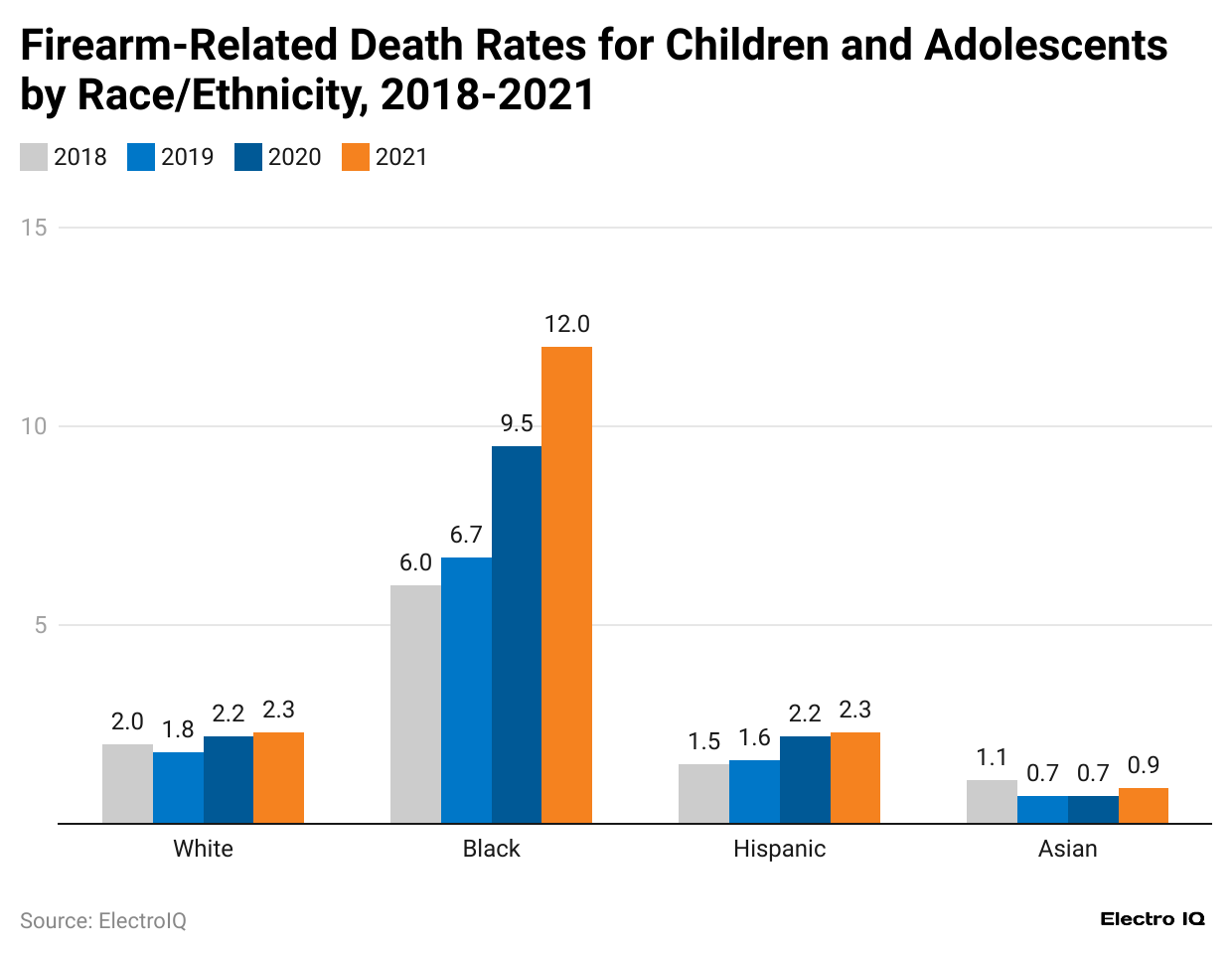
(Reference: kff.org)
- In 2023, firearms remained the leading cause of death among children and teens in the United States, surpassing motor vehicle accidents, cancer, and drug overdoses. This reflects a shocking shift in national health trends.
- Approximately 4,700 children and teens aged 0 to 19 died due to gun violence in 2023. This includes homicides, suicides, unintentional shootings, and deaths involving law enforcement.
- Teenagers aged 15 to 19 faced the highest rates, with firearm homicide rates nearly 18 times higher than the rate for children under age 14, showing that risk increases sharply during adolescence.
- Black children and teens are disproportionately affected, with gun homicide rates over 10 times higher than their white counterparts. This disparity reflects broader systemic issues related to poverty, segregation, and community safety.
- Suicide by firearm is rising among youth, particularly white males in rural areas. Many of these suicides occur in homes with unsecured firearms and limited mental health support.
- Unintentional shootings by and among children continue to claim hundreds of lives annually. In many of these cases, the shooter and the victim are both minors, and the firearm was often left loaded and accessible at home.
- According to advocacy data, more than 300 children under age 12 were killed in gun-related incidents in 2023, many in domestic violence situations or as bystanders to adult conflict.
- School shootings also contribute to the total. In 2023 alone, there were more than 300 school-based incidents involving firearms, ranging from accidental discharges to mass shootings.
- The emotional trauma of gun violence extends beyond fatalities. Thousands of young people are shot and survive, often facing long-term disability, PTSD, and academic or behavioral setbacks.
- These gun violence statistics point to the urgent need for safe firearm storage laws, youth intervention programs, mental health care, and school-based violence prevention strategies.
| Age Group | Total Deaths | Leading Cause | Primary Category |
| Ages 0 to 14 | 1,000 | Firearms | Accidental/Homicide |
| Ages 15 to 19 | 3,700 | Firearms | Homicide/Suicide |
| Total 0 to 19 | 4,700 | Firearms | Mixed |
| Top Risk Group | Black Meals 15 to 19 | Highest Homicide Rate | Homicide |
| Secondary Risk | White Males 15 to 19 | Rising Suicide Rate | Suicide |
Frequency, Fatalities, and Misconceptions
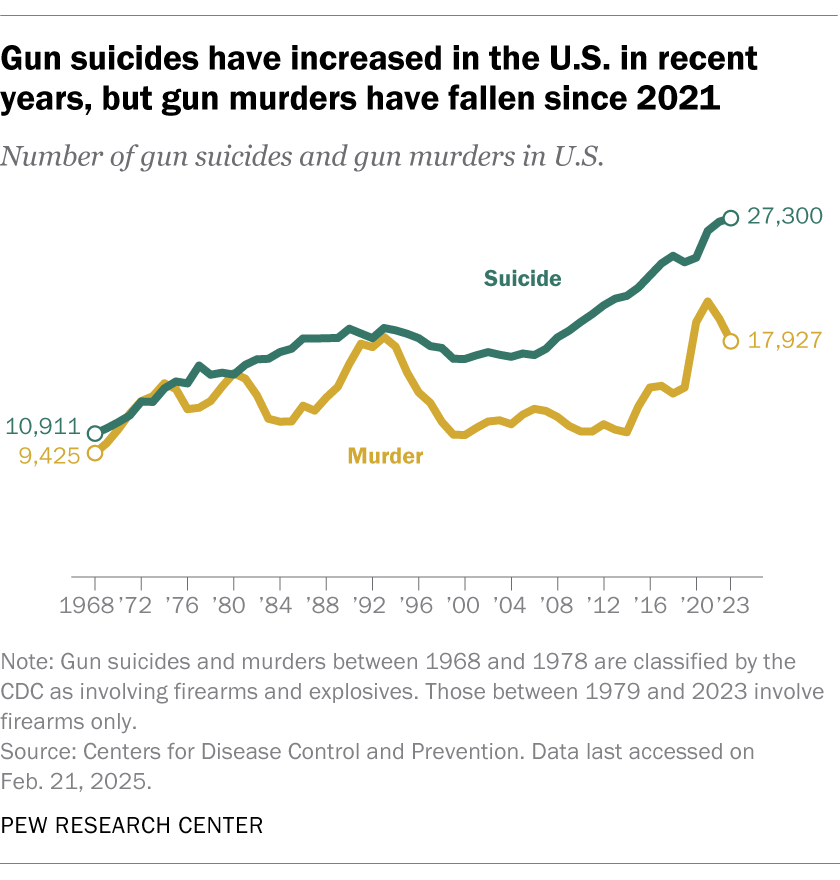
(Source: pewresearch.org)
- Mass shootings often dominate headlines and public debate, but they account for a small percentage of overall gun deaths in the United States. In 2023, mass shootings were responsible for less than 2% of total fatalities.
- The Gun Violence Archive defines a mass shooting as any incident where four or more people are shot, not including the shooter, regardless of motive or location. This broad definition captures more incidents than federal standards.
- According to the Gun Violence Archive, there were 656 mass shootings in 2023, nearly two incidents per day on average. These events occurred in homes, streets, schools, malls, and workplaces.
- The total number of deaths from these 656 incidents was around 848, with more than 2,800 people injured. While these numbers are smaller than suicides or homicides overall, the social and emotional impact is far-reaching.
- Mass shootings are not isolated to any one region. In 2023, these events occurred in nearly every state, although high-density urban areas saw more frequent incidents due to population concentration.
- High-profile mass shootings often involve assault-style weapons, but data shows that handguns are used in nearly 80% of all mass shootings, making everyday firearms more commonly involved than often assumed.
- Schools and places of worship continue to be targets. In 2023, there were 42 school shootings involving injuries or deaths, a number consistent with recent years and deeply alarming for parents and educators.
- Motives behind mass shootings vary. Some are related to domestic violence, others to gang activity, mental illness, or ideological extremism. Many cases still leave questions unanswered.
- Despite public perception, mass shootings are less predictable than other forms of gun violence and more difficult to prevent with targeted interventions, though red flag laws and background checks can help in some cases.
- These gun violence statistics show that while mass shootings do not represent the bulk of firearm deaths, they have a disproportionate influence on public opinion, fear, and national policy discussions.
| Metric | Number / Estimate |
| Total Mass Shootings | 656 |
| Total Deaths in Mass Shootings | 848 |
| Total Injuries | 2,800 |
| School-based Shooting Incidents | 42 |
| States Affected | 45+ |
| Primary Weapon Type | Handgun 80% |
| Assault Weapon Use Estimated | 18% |
| Average per Day | 1.8 incidents |
Gun Ownership and Access – Influence on Gun Violence Statistics
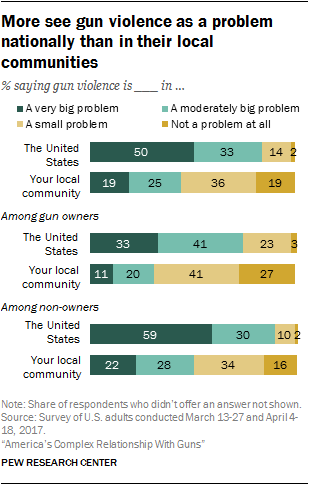
(Source: pewresearch.org)
- The United States has the highest rate of civilian gun ownership in the world, with an estimated 393 million guns in civilian hands. That’s more guns than people, with a ratio of 120 firearms per 100 residents.
- Studies have consistently shown a direct correlation between firearm access and firearm-related deaths. States with higher rates of gun ownership tend to have significantly more suicides and accidental shootings.
- In 2023, researchers found that states in the top quartile of gun ownership had suicide rates nearly double those in states with the lowest ownership rates. This is especially notable in rural areas.
- Households with firearms are at a greater risk of domestic violence deaths, especially involving women. Women in homes with a gun are five times more likely to be killed by an intimate partner.
- Firearms stored unlocked and loaded increase the risk of both suicide and accidental shootings, particularly among children and teens. Over 4.6 million children in the S. live in homes with unlocked, loaded guns.
- First-time gun ownership surged during the pandemic, especially among younger adults, minorities, and women. Many lacked formal training, increasing the risk of unintentional injury or misuse.
- Despite this increase, only 19 U.S. states have laws requiring safe storage or child access prevention. This leaves most households without a legal obligation to secure firearms from children or at-risk individuals.
- A large proportion of gun owners cite self-defense as the main reason for owning a firearm. However, studies show that guns in the home are far more likely to be used in suicide, domestic disputes, or accidents than in self-defense.
- Permitless carry laws have expanded across several states, eliminating the need for background checks or training for concealed carry. Experts warn these laws correlate with higher violent crime rates.
- These gun violence statistics highlight that access alone does not cause violence, but widespread, unregulated availability dramatically increases the risk of fatal outcomes when crises or conflicts arise.
| Metric | Value / Estimate |
| Civilian-Owned Guns in the U.S. | 393 million |
| Guns per 100 people | 120 |
| States Requiring Safe Storage Laws | 19 |
| Households with Unlocked, Loaded Firearms | 4.6 million |
| Increased Suicide Risk in High-Ownership States | 2x higher |
| Intimate Partner Homicide Risk (w/gun in home) | 5x higher |
| Firearm Use in Defensive Situations | 1% of all firearm uses |
| Permitless Carry States (as of 2023) | 27 |
Demographics and Disparities – Who Is Most Affected by Gun Violence
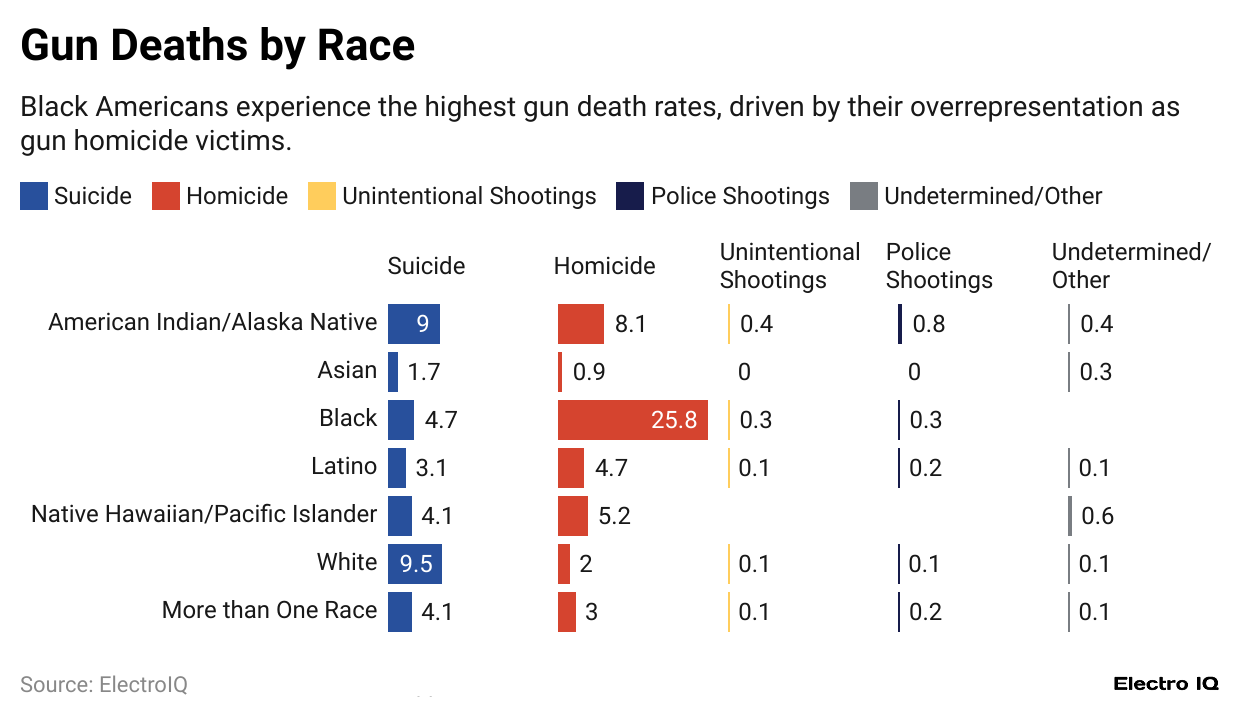
(Reference: giffords.org)
- Gun violence statistics clearly show that firearm-related harm is not equally distributed across the U.S. population. Some groups, by age, race, gender, and socioeconomic status, experience significantly higher risks than others.
- Young Black males (ages 15 to 34) are disproportionately affected by gun homicides. In 2023, their firearm homicide rate was nearly 20 times higher than that of white males in the same age group.
- Suicides by firearm are more common among white males, particularly those in middle-aged and rural populations. They accounted for the majority of the 27,300 gun suicides recorded in 2023.
- Latino communities also face elevated levels of firearm violence, especially in urban areas where gang activity and systemic inequalities make youth more vulnerable to homicide.
- Indigenous Americans (Native populations) have some of the highest firearm suicide rates in the country, particularly in remote areas with limited access to mental health resources.
- Men account for about 86% of all firearm deaths, including both homicides and suicides, while women are disproportionately victims in domestic and intimate partner violence situations involving guns.
- Transgender and LGBTQ+ individuals face higher rates of gun-related violence, particularly among youth, who are more likely to attempt suicide and face targeted assaults.
- Poverty plays a critical role in exposure to gun violence. Individuals in low-income neighborhoods are up to 10 times more likely to experience a shooting than those in affluent areas.
- Immigrants are statistically less likely to be involved in gun crime, contrary to public misconceptions. Data shows foreign-born individuals are victimized less and commit fewer gun-related offenses.
- Understanding these disparities is vital to crafting targeted interventions. Universal policies alone cannot address the unique risks faced by specific populations. Solutions must be made to race, gender, location, and economic conditions.
| Group | Primary Risk Area | Notable Statistic |
| Black males (15–34) | Homicide | ~20× higher homicide rate than white peers |
| White males (middle-aged) | Suicide | The majority of gun suicides |
| Indigenous Americans | Suicide | The highest rate per capita in some states |
| Women (especially victims of IPV) | Domestic violence deaths | 5× more likely to be killed with a gun |
| LGBTQ+ Youth | Suicide, assault | Disproportionate suicide attempt rate |
| Low-income individuals | Community violence | 10× more likely to be shot |
| Immigrant populations | Overall victimization | Lower risk than U.S.-born citizens |
Economic and Social Costs of Gun Violence
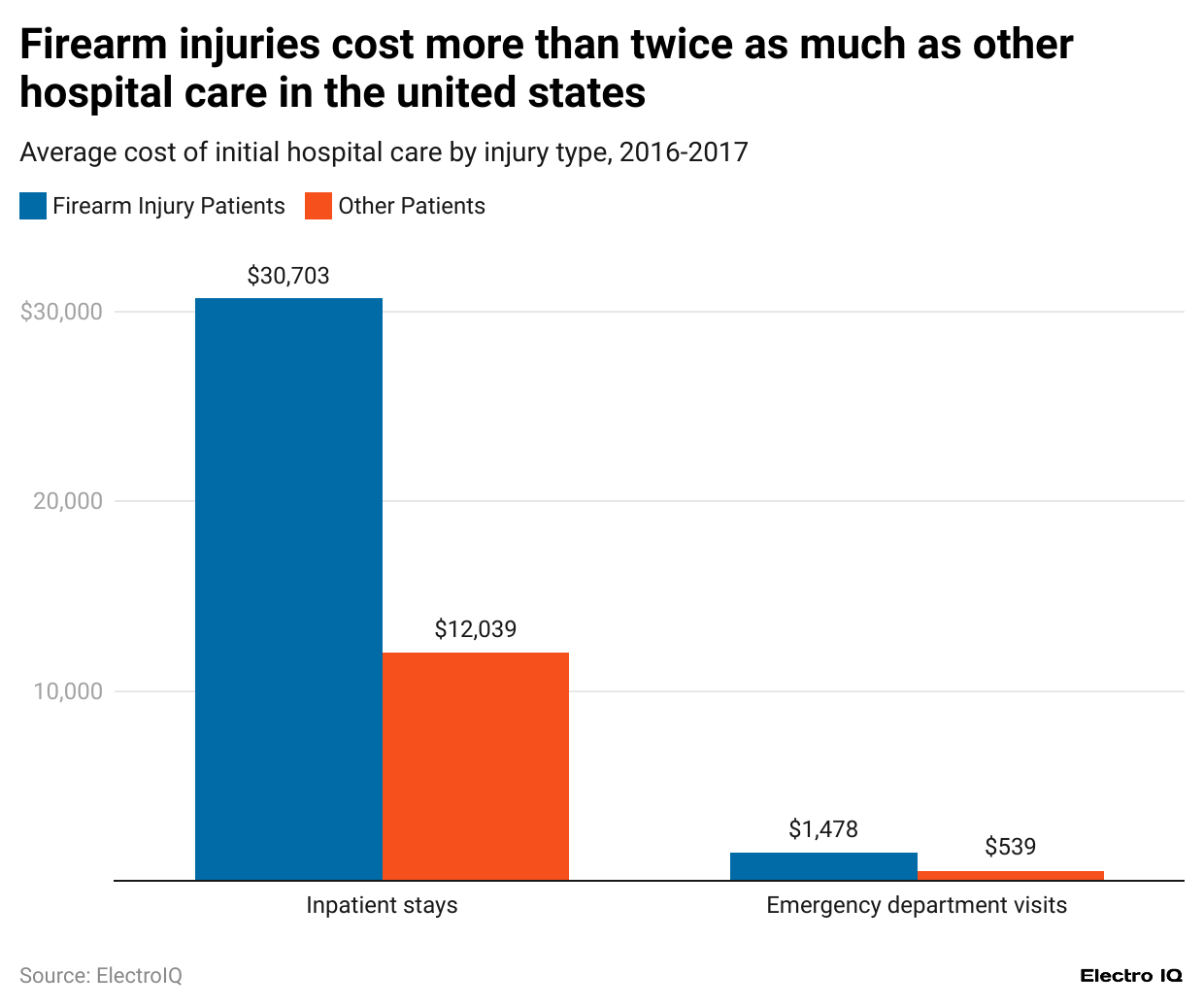
(Reference: equitablegrowth.org)
- Gun violence imposes enormous financial burdens on the U.S. economy. Estimates from research institutions place the total annual cost at over US$557 billion, factoring in healthcare, law enforcement, lost productivity, and legal expenses.
- Of that amount, direct medical costs, from emergency care, surgeries, and trauma treatment, exceed US$1 billion per year, a figure that reflects only a portion of what hospitals and public systems must absorb.
- Nonfatal injuries, especially those that result in disability, create long-term costs for both individuals and the state. Many victims require physical therapy, assistive devices, and ongoing psychological care.
- Victims of gun violence often face loss of income and employment due to physical or mental trauma. Communities with high rates of gun violence also experience lower economic activity and depressed property values.
- Taxpayers shoulder a large share of the financial burden. Most gunshot victims treated in hospitals are either uninsured or covered by public programs like Medicaid, shifting billions in costs to state and federal budgets.
- The criminal justice system spends billions investigating, prosecuting, and incarcerating individuals involved in gun-related crimes, adding further strain to courts, police, and prison systems.
- Schools in high-violence areas often experience disruptions, including student absenteeism, teacher turnover, and lower academic performance. Gun violence reduces educational outcomes over time.
- The psychological toll of gun violence, especially in children exposed to shootings, is long-lasting. Communities suffer collective trauma that can lead to depression, anxiety, and fear-based behavioral issues.
- Businesses in areas with frequent shootings face higher insurance rates, reduced foot traffic, and challenges attracting talent. In some cities, entire commercial blocks have been abandoned due to violence.
- These gun violence statistics reveal that the cost is not limited to hospitals or crime scenes. It ripples through health, education, employment, and neighborhood stability, making it one of the most expensive public health crises in modern America.
| Category | Estimated Annual Cost |
| Total Societal Cost | US$557 billion |
| Direct Healthcare Costs | US$1–2 billion |
| Lost Productivity (Fatalities) | US$44 billion |
| Criminal Justice Costs | US$8–12 billion |
| Government and Taxpayer Share | US$12 billion |
| Victim and Survivor Support | Unquantified, substantial |
| Property Value Loss | Billions (regional) |
| School and Educational Losses | Long-term, widespread |
Prevention, Policy, and Public Health Approaches
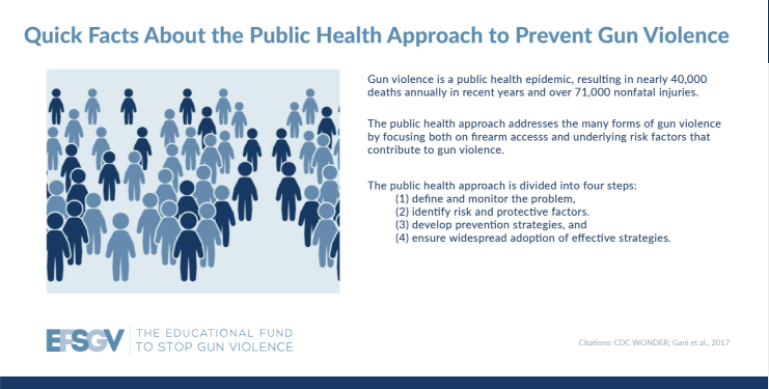
(Source: communitycommons.org)
- Data-driven gun violence prevention relies on understanding which strategies reduce deaths and injuries without infringing on constitutional rights. Experts view firearm violence as a public health crisis, requiring both legislative and community-level action.
- Universal background checks remain one of the most widely supported policies in public surveys. Studies show that states with such laws have lower homicide and suicide rates, especially when combined with permit requirements.
- Extreme risk protection orders, often called “red flag laws,” allow courts to temporarily remove firearms from individuals deemed a danger to themselves or others. These laws have prevented mass shootings and suicides in multiple states.
- Safe storage laws, requiring that firearms be locked and inaccessible to unauthorized users, significantly reduce unintentional shootings among children and teens. Only 19 states have such laws as of 2023.
- Community violence intervention (CVI) programs, including street outreach, violence interrupters, and hospital-based interventions, have shown measurable success in reducing urban gun violence.
- Gun buyback programs, though often debated, have removed thousands of unwanted firearms from homes. Their impact is greater when paired with public education on storage and risk.
- Public awareness campaigns play a key role in changing behavior. Messaging around suicide prevention, conflict resolution, and gun storage has proven effective in schools, media, and community settings.
- Federal funding for gun violence research was largely restricted for decades but has recently increased. This is leading to more studies, better data collection, and improved strategies for prevention.
- Countries like Australia, the UK, and Japan have implemented strict gun laws after major mass shootings and now have gun death rates more than 25 times lower than the U.S. Their success offers lessons that can be adapted locally.
- Gun violence statistics make clear that no single law or policy is enough. What works best is a layered approach, combining legislation, education, healthcare, and grassroots leadership to create safer communities.
| Strategy | Evidence of Effectiveness | Current U.S. Implementation |
| Universal Background Checks | Lower suicide/homicide rates | Not federal; 21 states |
| Red Flag Laws | Prevent suicides, some mass shootings | 21 states + D.C. |
| Safe Storage Requirements | Fewer child deaths and accidents | 19 states |
| Community Violence Interventions | Reduced urban gun crime in cities | 30+ city programs |
| Gun Buybacks | Reduced availability of firearms | Irregular; local programs |
| Federal Research Funding | Improves policy targeting | Reauthorized since 2019 |
| Public Awareness Campaigns | Behavioral changes among youth/adults | Local and nonprofit-driven |
Conclusion
Gun violence statistics are more than just numbers; they are a reflection of everyday tragedies unfolding in communities across the United States. Each suicide, homicide, or accidental shooting adds to a growing crisis that affects families, schools, and entire neighborhoods. The data from 2023 paints a sobering but clear picture: while some progress is being made, the scale of firearm deaths remains deeply concerning.
Understanding these statistics is the first step in pushing for meaningful change. From youth suicide to community violence and mass shootings, the patterns are undeniable. Prevention is possible. With better policies, smarter access controls, increased funding for public health interventions, and informed community programs, the country can reduce these numbers and save lives. These aren’t just statistics; they are lives that could still be here.
FAQ.
As of 2023, the United States recorded 46,728 firearm-related deaths, with a rate of 13.7 deaths per 100,000 people. This includes over 27,300 suicides (58%) and 17,927 homicides (38%).
The U.S. gun homicide rate is about 26 times higher than that of other similar countries. These disparities highlight the unique scale of U.S. gun violence.
Approximately 60% of gun deaths in the U.S. are suicides, while about 38–40% are homicides . Firearm suicides are highly lethal, with a fatality rate of around 90%.
In 2023, there were 656 mass shootings (where four or more people were shot, excluding the shooter), resulting in 848 deaths and nearly 2,800 injuries. While widely covered in the media, these incidents constitute less than 2% of total firearm deaths.
Young Black males aged 15 to 34 are disproportionately impacted. They face a firearm homicide rate almost 20 times higher than their white male peers .
Yes. In 2023, gun violence was the leading cause of death among children and teens (0–19) in the U.S., with approximately 4,700 deaths . That’s about 12 child deaths per day and 32 wounded.
There is a strong correlation: states with higher civilian gun ownership, around 120 guns per 100 people nationally, see higher rates of both suicide and homicide. Easy access increases the risk of impulsive violence.
Yes. The Brady Act has blocked over 1.2 million gun purchases through the National Instant Criminal Background Check System (NICS), reducing firearm suicides, especially among older adults. Expanding checks to private sales reduces homicides
Red flag or extreme risk protection orders allow temporary removal of firearms from individuals at high risk. In states like Connecticut and Indiana, these laws have reduced firearm suicides by between 1.6% and 13.7%.
Gun violence carries an estimated annual economic and social cost of over $550 billion, covering healthcare, criminal justice, lost productivity, and community repair . These hidden costs affect families and public systems alike.

Joseph D'Souza founded ElectroIQ in 2010 as a personal project to share his insights and experiences with tech gadgets. Over time, it has grown into a well-regarded tech blog, known for its in-depth technology trends, smartphone reviews and app-related statistics.






